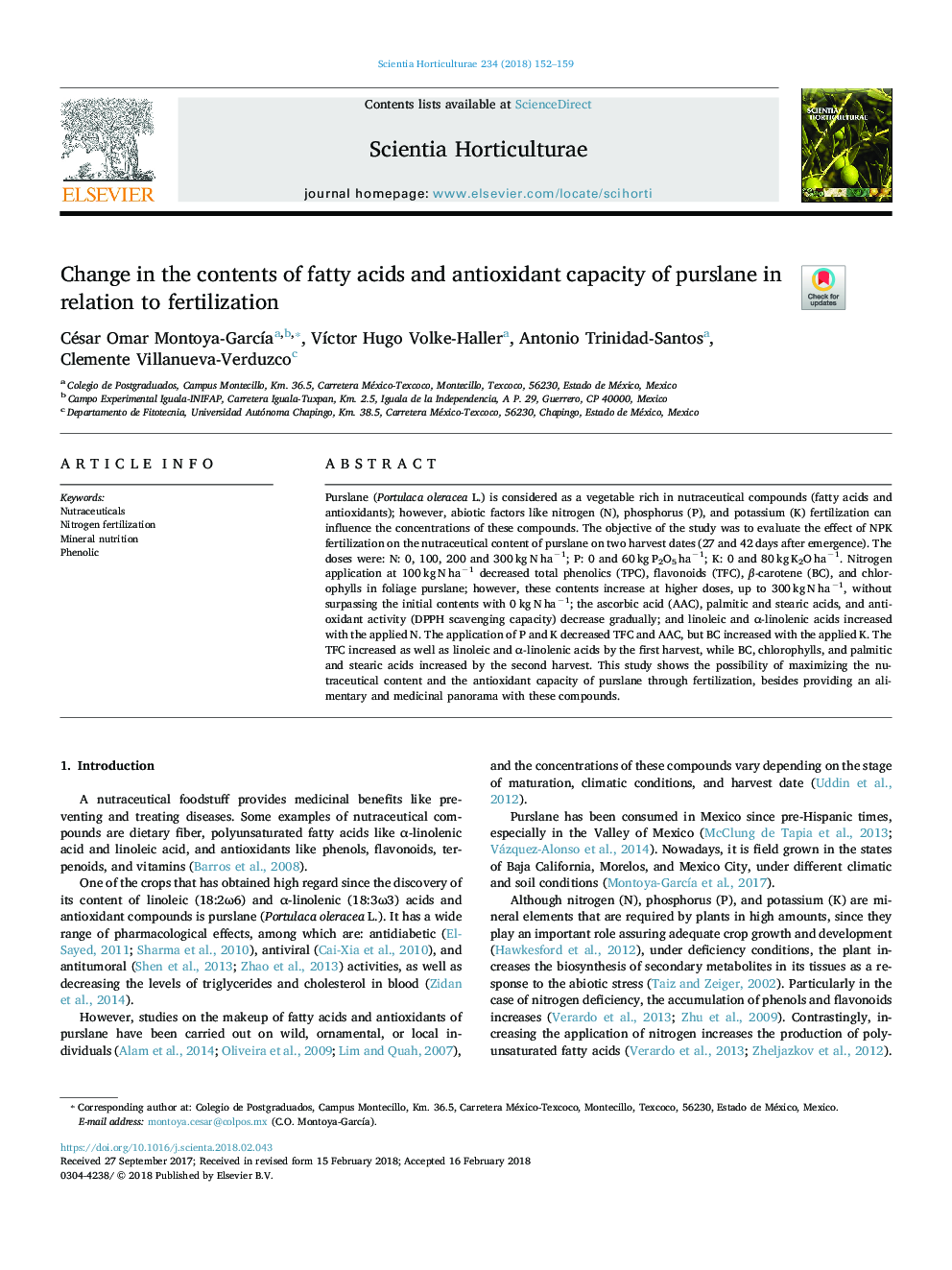| Article ID | Journal | Published Year | Pages | File Type |
|---|---|---|---|---|
| 8892758 | Scientia Horticulturae | 2018 | 8 Pages |
Abstract
Purslane (Portulaca oleracea L.) is considered as a vegetable rich in nutraceutical compounds (fatty acids and antioxidants); however, abiotic factors like nitrogen (N), phosphorus (P), and potassium (K) fertilization can influence the concentrations of these compounds. The objective of the study was to evaluate the effect of NPK fertilization on the nutraceutical content of purslane on two harvest dates (27 and 42 days after emergence). The doses were: N: 0, 100, 200 and 300â¯kgâ¯Nâ¯haâ1; P: 0 and 60â¯kgâ¯P2O5â¯haâ1; K: 0 and 80â¯kgâ¯K2Oâ¯haâ1. Nitrogen application at 100â¯kgâ¯Nâ¯haâ1 decreased total phenolics (TPC), flavonoids (TFC), β-carotene (BC), and chlorophylls in foliage purslane; however, these contents increase at higher doses, up to 300â¯kgâ¯Nâ¯haâ1, without surpassing the initial contents with 0â¯kgâ¯Nâ¯haâ1; the ascorbic acid (AAC), palmitic and stearic acids, and antioxidant activity (DPPH scavenging capacity) decrease gradually; and linoleic and α-linolenic acids increased with the applied N. The application of P and K decreased TFC and AAC, but BC increased with the applied K. The TFC increased as well as linoleic and α-linolenic acids by the first harvest, while BC, chlorophylls, and palmitic and stearic acids increased by the second harvest. This study shows the possibility of maximizing the nutraceutical content and the antioxidant capacity of purslane through fertilization, besides providing an alimentary and medicinal panorama with these compounds.
Related Topics
Life Sciences
Agricultural and Biological Sciences
Horticulture
Authors
César Omar Montoya-GarcÃa, VÃctor Hugo Volke-Haller, Antonio Trinidad-Santos, Clemente Villanueva-Verduzco,
